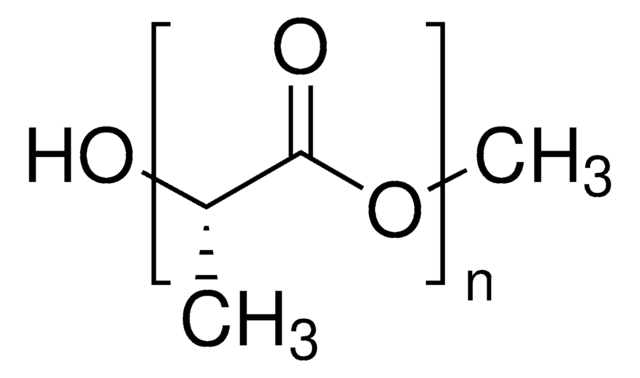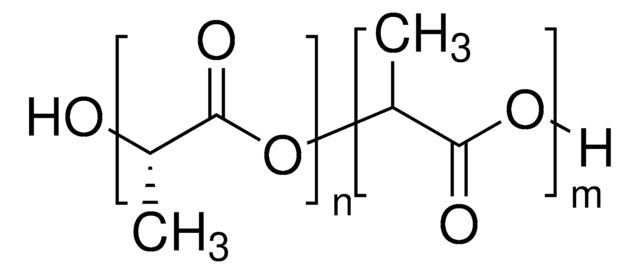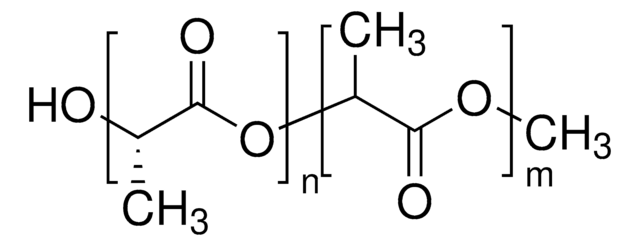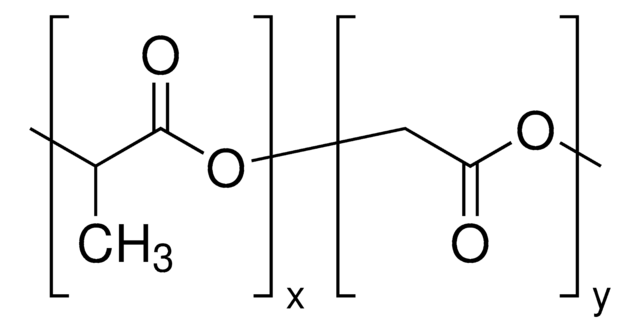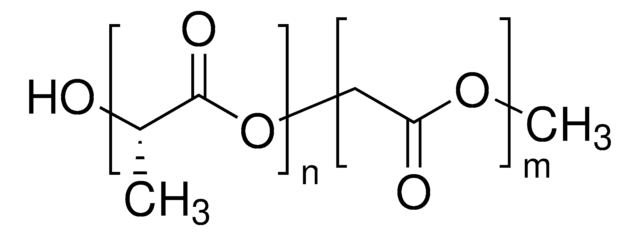719854
Resomer® L 206 S, Poly(L-lactide), ester terminated
Synonim(y):
PLL
About This Item
Polecane produkty
Postać
granular
ramy czasowe degradacji
>3 years
lepkość
0.8-1.2 dL/g, 0.1 % in chloroform(25 °C, Ubbelohde) (size 0c glass capillary viscometer)
temp. przejścia
Tm 180-185 °C
Tg 60-65 °C
temp. przechowywania
2-8°C
Powiązane kategorie
Opis ogólny
Zastosowanie
Informacje prawne
produkt powiązany
Kod klasy składowania
11 - Combustible Solids
Klasa zagrożenia wodnego (WGK)
WGK 3
Temperatura zapłonu (°F)
Not applicable
Temperatura zapłonu (°C)
Not applicable
Certyfikaty analizy (CoA)
Poszukaj Certyfikaty analizy (CoA), wpisując numer partii/serii produktów. Numery serii i partii można znaleźć na etykiecie produktu po słowach „seria” lub „partia”.
Masz już ten produkt?
Dokumenty związane z niedawno zakupionymi produktami zostały zamieszczone w Bibliotece dokumentów.
Klienci oglądali również te produkty
Produkty
Interest in utilizing biodegradable polymers for biomedical applications has grown since the 1960s.
AliAliphatic polyesters, including polylactide and polyglycolide, are biodegradable polymers widely used in medical applications.
Immunosuppressive tumor-associated myeloid cells (TAMC) are responsible for glioblastoma (GBM) resistance to immunotherapies and existing standard of care treatments. This mini-review highlights recent progress in implementing nanotechnology in advancing TAMC-targeted therapies for GBM.
W ciągu ostatnich dwóch dekad inżynieria tkankowa i medycyna regeneracyjna stały się ważnymi dziedzinami interdyscyplinarnymi, które obejmują biologię, chemię, inżynierię i medycynę.
Nasz zespół naukowców ma doświadczenie we wszystkich obszarach badań, w tym w naukach przyrodniczych, materiałoznawstwie, syntezie chemicznej, chromatografii, analityce i wielu innych dziedzinach.
Skontaktuj się z zespołem ds. pomocy technicznej



